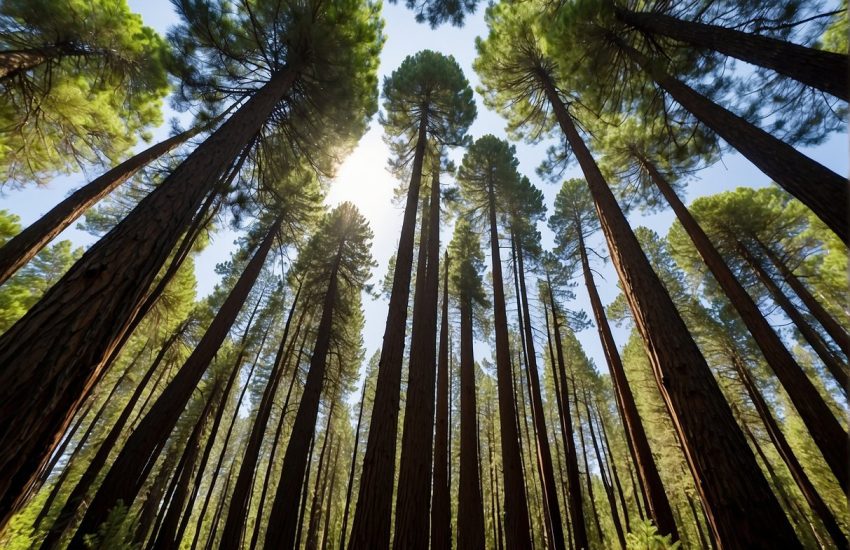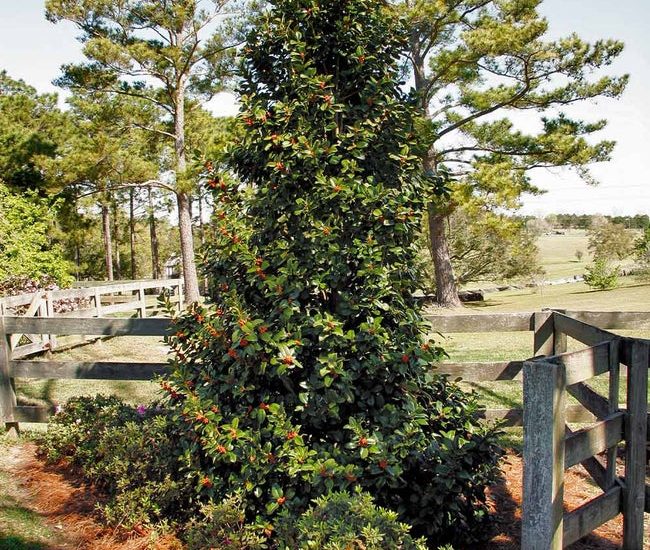South Florida Pine Trees: A Guide to the Most Common Species
South Florida is home to a diverse range of ecosystems, each with its unique flora and fauna. One of the most abundant tree species found in this region is the South Florida Pine Tree. These trees belong to the Pinaceae family and are an essential part of the region’s habitat.

The South Florida Pine Tree is a coniferous evergreen tree that can grow up to 100 feet tall. These trees are found in a variety of habitats, including pine rocklands, cypress swamps, and coastal areas. They play a crucial role in maintaining the ecological balance of the region, providing shelter and food for a wide range of wildlife, including birds, squirrels, and insects.
Despite their importance, South Florida Pine Trees face several threats, including habitat loss and degradation. As a result, conservation efforts are underway to protect these trees and their habitats. In this article, we will explore the ecology of South Florida Pine Trees, their role in the region’s ecosystem, and the challenges they face.
Species and Characteristics

Slash Pine (Pinus Elliottii)
Slash Pine is a common pine species found in South Florida. It is known for its tall, straight trunks that can grow up to 100 feet in height. The needles of the Slash Pine are long and slender, measuring between 8 and 12 inches in length. The cones of the Slash Pine are large and can grow up to 10 inches in length. The bark of the Slash Pine is thick and scaly, and it is usually dark brown in color. The resin of the Slash Pine is used in the production of turpentine.
Longleaf Pine (Pinus Palustris)
Longleaf Pine is another common pine species found in South Florida. It is known for its long, slender needles that can grow up to 18 inches in length. The cones of the Longleaf Pine are also long and slender, measuring between 6 and 10 inches in length. The bark of the Longleaf Pine is thick and scaly, and it is usually brown in color. The trunk of the Longleaf Pine is straight and can grow up to 100 feet in height. The resin of the Longleaf Pine is used in the production of naval stores.
Sand Pine (Pinus Clausa)
Sand Pine is a smaller pine species found in South Florida. It is known for its short, stout needles that measure between 1 and 2 inches in length. The cones of the Sand Pine are small and can grow up to 2 inches in length. The bark of the Sand Pine is thin and scaly, and it is usually light brown in color. The trunk of the Sand Pine is usually crooked and can grow up to 40 feet in height. The resin of the Sand Pine is used in the production of turpentine.
Other Pine Species
There are several other pine species found in South Florida, including the Loblolly Pine, the Shortleaf Pine, and the Spruce Pine. These species are less common than the Slash Pine, Longleaf Pine, and Sand Pine, but they still play an important role in the ecosystem of South Florida. Each of these species has its own unique characteristics, such as needle length, cone size, and bark color. Overall, the pine trees of South Florida are an important part of the region’s natural beauty and biodiversity.
Habitat and Growth Conditions

Soil and Topography
South Florida pine trees thrive in sandy soils with low nutrient content. They are commonly found in flatwoods, where the terrain is flat and the water table is close to the surface. Drainage is poor in these areas, which is ideal for the growth of these trees. The sandy soil allows for good root development and the trees can withstand high winds.
Climate and Weather Tolerance
South Florida is known as the “Sunshine State” due to its warm and sunny climate. Pine trees in this region have adapted to the heat and humidity, and can tolerate drought conditions. They are also able to withstand occasional flooding. These trees are well-suited to the subtropical climate of South Florida.
Fire Ecology
Fire is an important part of the ecology of South Florida pine forests. These trees have thick bark that protects them from low-intensity fires. In fact, some species require fire to germinate. However, fire suppression efforts in recent years have led to an increase in fuel buildup, which can lead to more intense fires. Proper management of these forests is necessary to maintain their health and prevent catastrophic wildfires.
Ecological Role and Conservation

Wildlife and Biodiversity
South Florida pine trees play a crucial role in providing habitat for a diverse range of wildlife. The longleaf pine ecosystem, which once covered much of the region, supported a wide variety of species, including the Florida panther, red-cockaded woodpecker, and gopher tortoise. However, due to urban development and other factors, much of this habitat has been lost.
Despite this, efforts to conserve and restore pine forests have helped to maintain and even increase biodiversity in some areas. For example, prescribed burns, which mimic the natural fire ecology of the region, can help to maintain open, grassy understories that provide habitat for many species. Additionally, planting native pine species and removing invasive plants can help to support a more diverse range of wildlife.
Conservation Challenges
Conserving South Florida pine trees is not without its challenges. Urban development continues to encroach on natural areas, fragmenting and reducing habitat. Additionally, the spread of non-native species, such as Brazilian pepper and melaleuca, can outcompete native pines and other plants, reducing biodiversity.
Furthermore, fire suppression has led to a buildup of fuel in some areas, increasing the risk of catastrophic wildfires. This can not only harm wildlife but also threaten nearby communities. Balancing the need for fire management with the safety of nearby residents is a complex challenge.
Restoration Efforts
Despite these challenges, many organizations are working to conserve and restore South Florida pine forests. The South Florida Water Management District, for example, has implemented a long-term plan to restore over 50,000 acres of pine rockland habitat. This includes planting native species, removing invasive plants, and using prescribed burns to maintain a healthy ecosystem.
Other organizations, such as the Nature Conservancy and the National Park Service, are also working to conserve and restore pine forests in the region. By working together and using a variety of conservation strategies, it is possible to protect and restore the ecological role of South Florida pine trees.
Practical Uses and Management

Commercial and Industrial Use
South Florida pine trees have a long history of commercial and industrial use. One of the most well-known products derived from pine trees is turpentine, which is obtained by tapping the trees and collecting the resin. Turpentine has a wide range of applications, including as a solvent, paint thinner, and ingredient in various industrial products.
Another product that can be derived from South Florida pine trees is pine nuts, which are a nutritious and tasty food source. Pine nuts are used in a variety of dishes, including salads, pasta, and desserts.
Landscaping and Ornamental Use
South Florida pine trees are also commonly used in landscaping and as ornamental trees. They are often planted as shade trees in parks, along streets, and in residential areas. Pine trees can also be used to create a natural windbreak or privacy screen.
In addition, pine trees can be used to create a beautiful and low-maintenance landscape. Pine straw, which is made from the needles that fall from the trees, can be used as a mulch to help retain moisture in the soil and suppress weed growth. Pine straw is also an attractive ground cover that can add texture and color to a landscape.
Forest Management Practices
Proper forest management practices are essential for ensuring the health and longevity of South Florida pine trees. Regular fertilization can help promote healthy growth and prevent nutrient deficiencies. In addition, pruning can help maintain the shape and structure of the trees and prevent the spread of disease.
Harvesting pine trees for commercial use must also be done carefully and sustainably to prevent damage to the ecosystem. Saw palmetto, which is often found growing under pine trees, is an important part of the ecosystem and must be protected during harvesting.
Overall, South Florida pine trees have a wide range of practical uses and require careful management to ensure their continued health and productivity.


